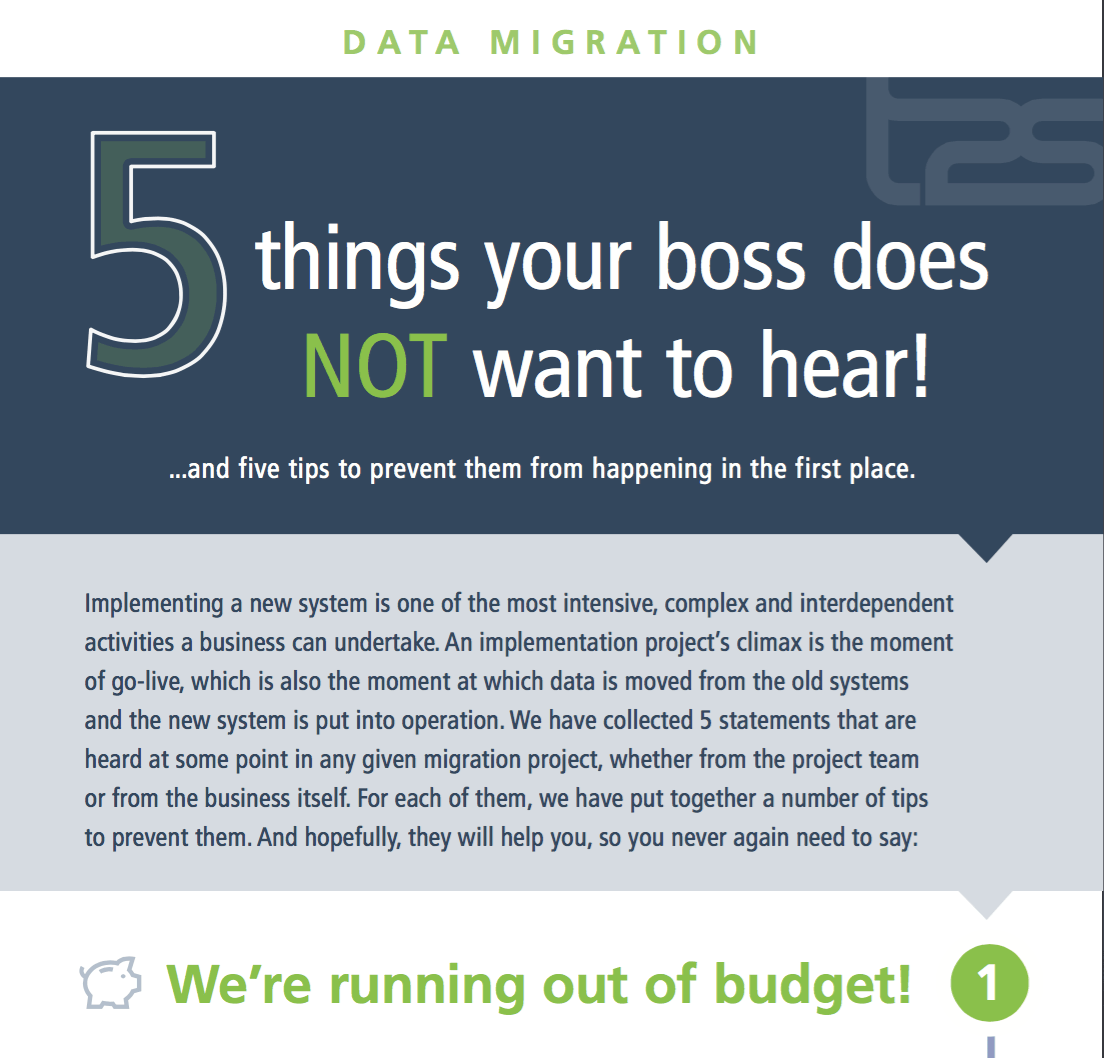Checklist for a successful data migration
Five things your boss does not want to hear …and 5 tips to prevent them from happening in the first place
We have collected 5 statements that are heard at some point in any given migration project, whether from the project team or from the business itself.
For each of them, we have put together a number of tips to prevent them.
And hopefully, they will help you, so you never again need to say:
- We’re running out of budget!
- We’re running out of time!
- We’re running out of resources!
- The new system is not working!
- We can’t go live!
Data migration for Eichholtz
T2S helped Eichholtz with the data migration to the new IT system by deploying a data specialist alongside the data migration platform & data quality dashboard within the organization on a project basis.
“Type 2 Solutions provided us guidance in the project. The system Type 2 Solutions uses, the Data Migration Platform in combination with the Data Quality Dashboard, works like a charm. We continuously had a reference point available during the migration process; this has been migrated, this had been uploaded and these are the differences.”
Interview with Jeroen Raijmakers, IT Director at Eichholtz.
Data migration approach
We have over extensive experience with data migration and data integration. In addition to extensive experience with various database platforms, such as Oracle, Microsoft SQL Server, IBM DB2 and MySQL, T2S has experience in migrating data to and integrating data between various IT systems and software packages.
Our data specialists have experience with data migration, integration and data quality projects in various fields such as aviation, finance, food, chemicals, logistics, healthcare, government, IT, mobility, energy, telecom and multimedia.
Read more about our proven approach and extensive experience with data migration and integration.
Data migration projects
Please read one of our reference cases at Eichholtz, DELTA Fiber and the National Library.
Frequently asked Questions (FAQs) about data migration
After you have decided that it is time to put a new system in place. Start thinking about the data migration before you choose the new system.
Data migration factors into your choice for a new system and supplier. Compare it to moving house. If you are unsure as to whether the furniture that you care about is going to fit in the new home easily or only by pulling out all the stops, this will affect your choice for a new home.
Your requirements for the new system are that you can migrate data into it, that it supports your operational processes and that you can bring the data that is now available to you to the new system or systems. In addition, you will want to know which data migration tasks will be the supplier’s responsibility and which tasks you will be expected to take on during the implementation.
When a programme manager is set to implement a new system, they will want to know beforehand how much effort it will take to run tests and train users, and how long it will take to migrate the data. Say you want the migration to be completed within one weekend, but the loading of all the data is going to take 6 weeks. It is clear that this is not feasible. In brief, you will need to give this some thought beforehand, so the data migration will form an integral part of the programme and you can make a budget available for this purpose.
You can do so as soon as the programme manager has formed the project team for the implementation. Hire a project manager who will be responsible for the data migration. The project manager will draw up the data migration plan.
The data migration plan includes, amongst other things: the data migration strategy, the action plan, a risk inventory, the data migration process, the control framework, the data quality optimalisation process, planning and the necessary resources and tools.
Why would you start with a preliminary investigation with a data migration plan as your deliverable? The answer is very simple: because you need to know, as does any organisation, what it will cost, who you need to hire, how long it will take, and what the risks are.










 Webinar EDI and SSCC labels
Webinar EDI and SSCC labels  Thank you for visiting us at ICT & Logistics 2024
Thank you for visiting us at ICT & Logistics 2024